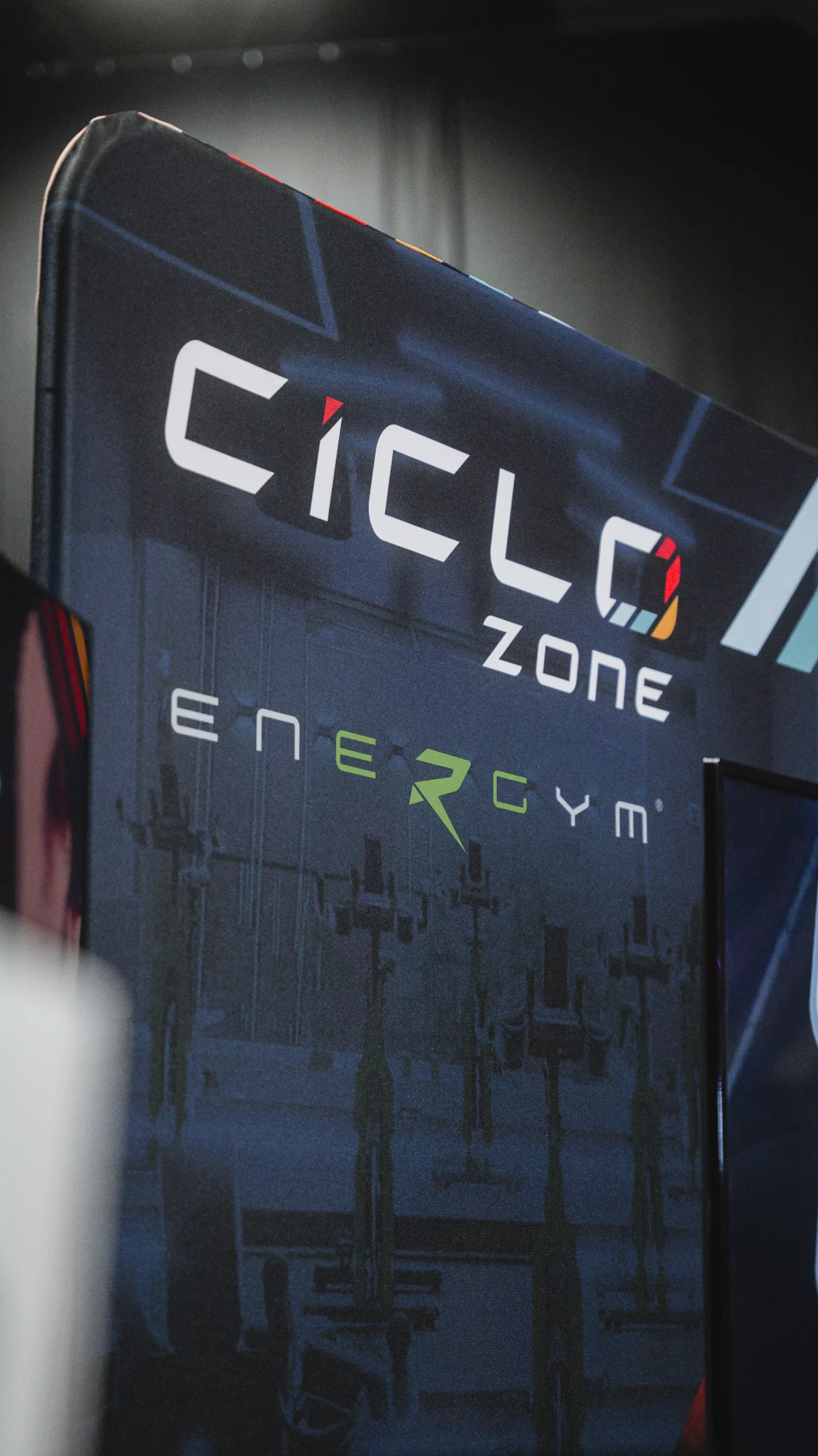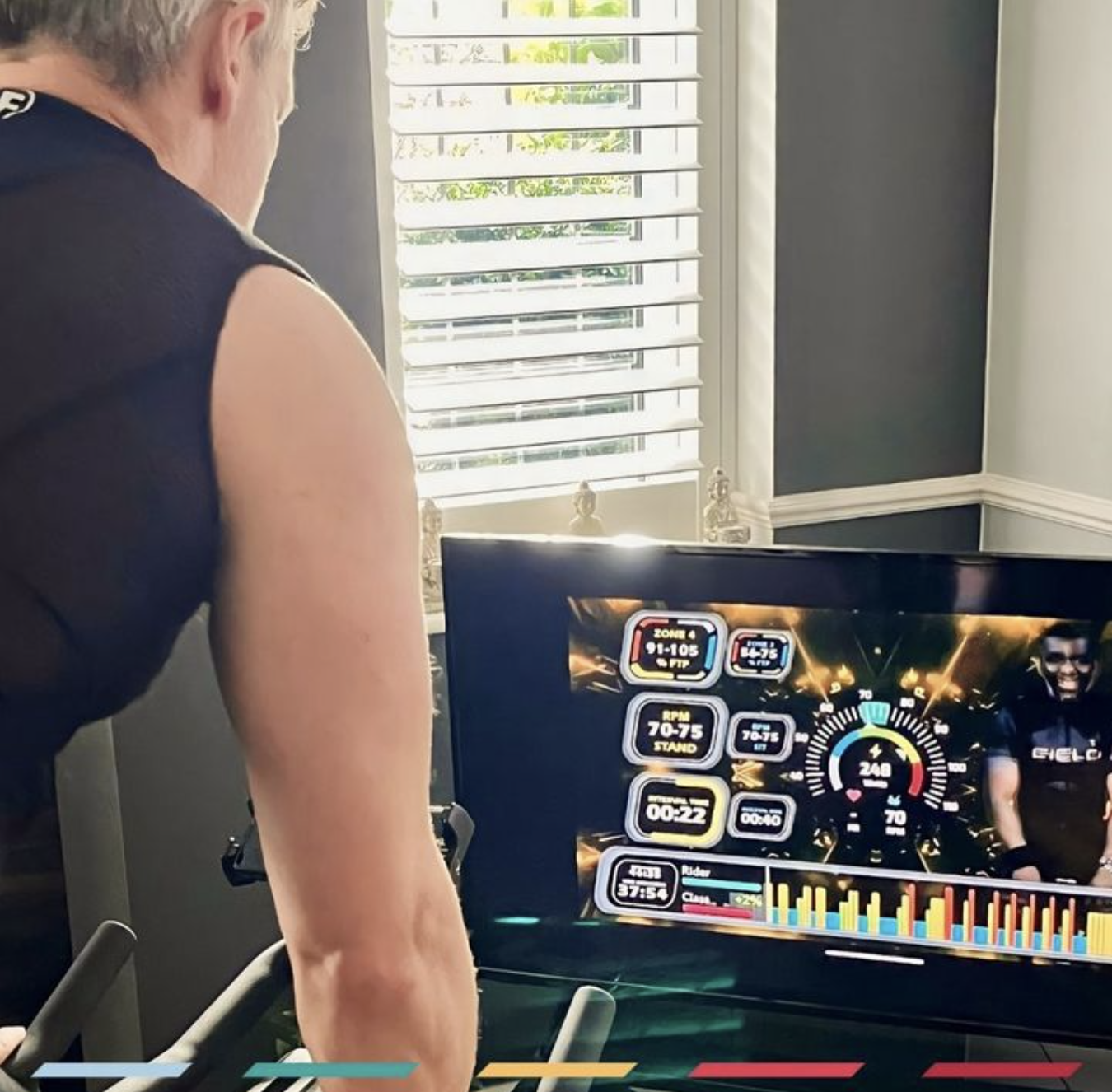Shout out to Ryan, an avid indoor cyclist who asked about the average watts of a ride and where it should be relative to his FTP!
What is the value of average watts data?
The average watts displayed at the end of a ride, whether it is on your bike console or your CicloZone summary screen, refers to the arithmetic mean – the sum of the numbers divided by how many numbers are being averaged. While the average watts is an important metric – it has limited value.
Imagine two very different rides each ending with the exact same average watts.
- The first ride is all about aerobic develpment. Mid blue, endurance trining zone, steady-state, holding 75% FTP for 60 minutes
- The second ride is a HIIT style of ride, focused on VO2 Max development. The workout consists of 10 set of 3 minutes at 110% FTP, followed by 3 mintes of recovery at 40% FTP
Both of these workouts average 75% FTP but they have drastically different physiological training responses. Now imagine if you only did 20 minutes of the easy-peasy steady-state ride but still did the 60 minutes of 110% on, 40% off. You STILL have two rides with the same average watts.
I am hopeful this illustrates why comparing average watts between two different workouts has no benefit!
Training Principles – aka SCIENCE
Where average watts does have immense value is when it is used to compare past to present performance on the same ride profile or when used mid workout as a benchmark for intervals.
Anyone who goes to the gym regularly to lift weights knows the thrill of having to increase your weights because what you were doing a few weeks ago isn’t taking you to the same level of failure it once did. If you repeat the exact same workout and you are able to lift more, you have gotten stronger.
This is the training principle known as Supercompensation and it applies in all exercise physiology.
Author Vern Gambetta in his book Athletic Development explains it this way, “Supercompensation is a four-step process. The first step is the application of a training or loading stress and the body’s subsequent reaction to this training stress, which is fatigue or tiring. There is a predictable drop-off in performance because of that stress.
“Step 2 is the recovery phase. This can be a lighter training session, a recovery session, or active rest. As a result of the recovery period, the energy stores and performance will return to the baseline (state of homeostasis) represented by the point of the application of the original training stress.
“Step 3 is the supercompensation phase. This is the adaptive rebound above the baseline; it is described as a rebound response because the body is essentially rebounding from the low point of greatest fatigue. This supercompensation effect is not only a physiological response but also a psychological and technical response.
“The last step in the process is the loss of the supercompensation effect. This decline is a natural result of the application of a new training stress, which should occur at the peak of supercompensation. If no training stress is applied, there will also be a decline. This is the so-called detraining phenomenon”. Remember my last blog about recovery?
The second situation where average watts is useful is when you are doing repeated efforts.
When an interval training ride is programmed properly, a rider ‘should’ be able to complete all intervals at the specified intensity for the specified duration. The caveat here is that if you are new to training or have not focused on a particular physiological response for a while, it may take a few rides to condition your body to get there. A fellow coach of mine refers to this as keeping ‘all the tools in the toolshed sharp’. If you’ve spent the last six weeks focused on sub threshold and threshold efforts, those first few supra threshold workouts are going to hurt more than usual. Why? Because as discussed above, our bodies will adapt to the stress we are applying. If we don’t apply it consistently and follow it with recovery, you’re more than likely going to see stagnant performance or, more likely, detraining.
Next week – I will tell you all about a number that you DO want to be aware of, each and every ride….
Every CicloZone workout makes sure you work at the right intensity for you for the optimum amount of time to deliver results. Download the app at the App Store or Google Play.




